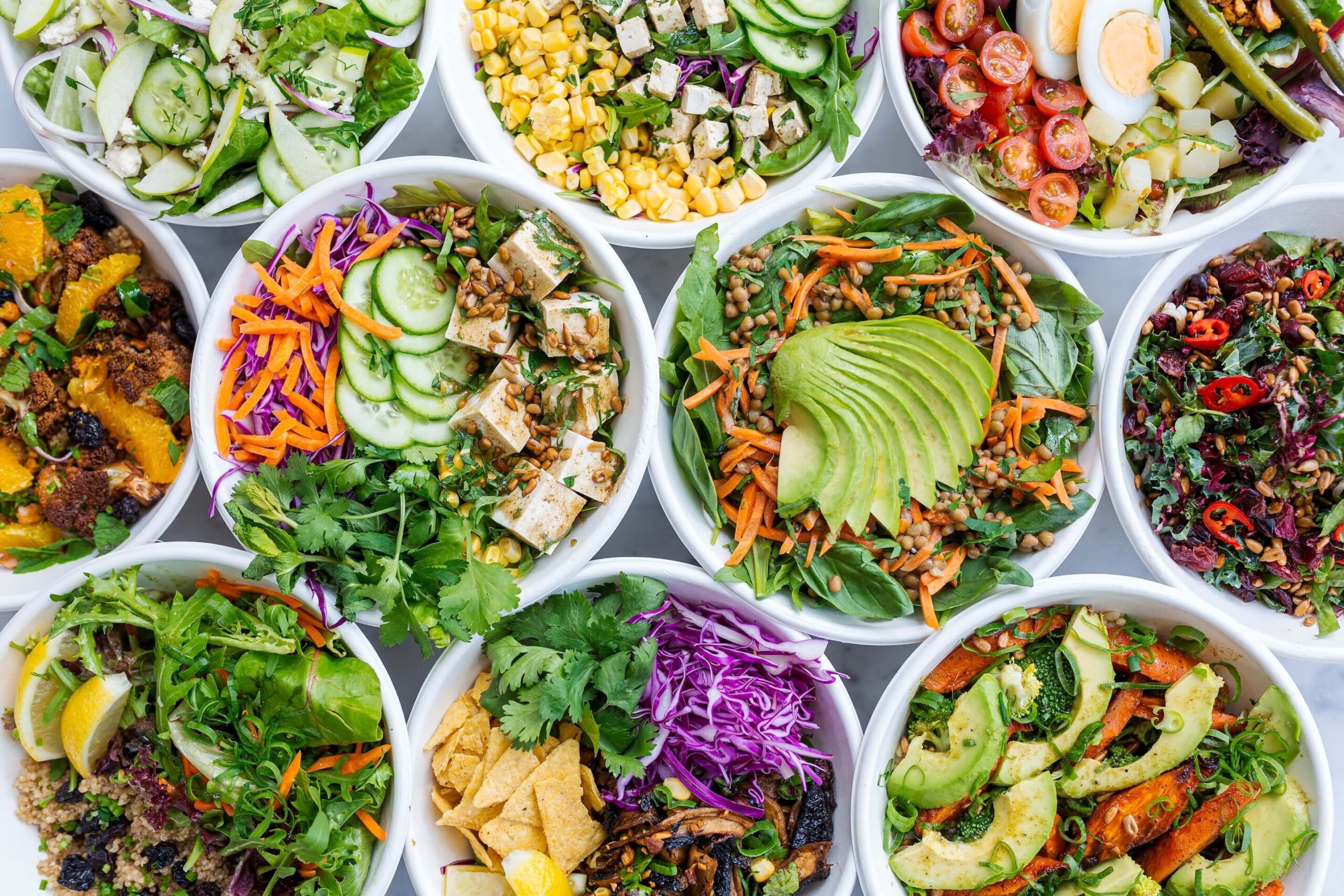You’re standing in the grocery store, staring at two identical-looking apples. One has a “non-GMO” label, the other doesn’t. Your mind races: “Should I be avoiding GMOs? Will they affect my cancer risk? Am I putting my recovery in jeopardy if I choose wrong?”
I get it. When you’re navigating cancer, every food choice feels monumentally important, and the conflicting information about genetically modified organisms only adds to the overwhelm.
Here’s what I know after 15 years as an oncology dietitian: the fear around GMO foods has created unnecessary anxiety for countless cancer survivors.
You’ve probably read terrifying claims online that GMOs cause cancer, that they’re “Frankenfoods,” that they’re destroying our health. But here’s the truth that often gets buried under fear-mongering: after nearly 30 years and over 3,000 scientific studies, there is zero credible evidence linking GM crops to cancer. Zero.
I’m not here to tell you what to eat or judge your food choices. I’m here to give you the facts backed by the Food and Drug Administration, World Health Organization, American Cancer Society, and 284 other scientific institutions worldwide so you can make decisions from a place of confidence, not fear.
Because you deserve to know that the scientific consensus on GMO safety is as strong as it is for any other well-established scientific fact.
Your energy is precious, especially now. Let’s not waste it worrying about biotech crops when there are real, evidence-based strategies that actually impact your cancer risk and recovery.
Cut through the GMO noise and focus on what actually lowers recurrence risk.
My free Clean Scan Plan guide walks you through my NED Method 5 Pillar Approach. Nutrition, movement, hydration, sleep, stress after cancer so you can start doing what matters most today.
What Are GMOs? Understanding Genetic Modification in Food
To make informed decisions about your diet, it’s essential to understand what genetic engineering actually means and how it differs from traditional agricultural practices.
The Evolution of Plant Breeding
Humans have been modifying the genetics of our food supply for over 10,000 years through selective breeding. Every crop we eat today from sweet corn to seedless watermelons – has been genetically altered from its wild ancestors.
Traditional plant breeding involves crossing plants with desirable traits and selecting offspring over many generations.
Modern genetic modification uses recombinant DNA techniques to make precise changes at the molecular level.
Scientists can identify specific genes responsible for traits like insect resistance or vitamin A production and transfer them using methods like Agrobacterium tumefaciens bacteria or a gene gun. This precision actually makes the process more predictable than traditional breeding methods.
Which Foods Are Actually GMO?
Contrary to popular belief, only 10 GMO crops are commercially available in the United States: corn, soybeans, cotton, canola, sugar beets, alfalfa, papaya, summer squash, potatoes, and apples. Important to note: there is no GMO water or GMO salt – these are chemically impossible since water and salt don’t contain genes.
The virus-resistant papaya saved Hawaii’s papaya industry from devastation, while insect-resistant eggplant has helped farmers in Bangladesh reduce pesticide use by 70%. Golden Rice, engineered to produce beta-carotene, addresses vitamin A deficiency in developing countries a condition that causes blindness in 250,000-500,000 children annually.
Do GMOs Cause Cancer? Debunking Common Myths with Research
Misinformation about GMOs and cancer has created unnecessary fear among survivors. Here’s what the research actually shows about common concerns.
What Cancer Research Actually Shows?
The claim that GMOs cause cancer originated from a now-retracted 2012 study that used tumor-prone rats and flawed methodology. Since then, extensive long-term studies and risk assessment protocols have found no link between GE foods and cancer.
The European Food Safety Authority, along with regulatory authorities in over 70 countries, has confirmed the safety of approved GMO crops worldwide.
A comprehensive meta-analysis published in 2014 reviewed 147 studies and found that GM crops have actually reduced chemical pesticide use by 37% while increasing crop yields by 22%. For context, billions of animals have consumed GMO feed for decades without any documented health issues – if GMOs caused cancer, we would have seen clear evidence by now.
The data says GMOs aren’t the lever that moves cancer risk. The big levers are fiber, plant diversity, body weight, alcohol, activity, sleep, and stress and I show you exactly how to apply those inside the Clean Scan Plan using my NED Method.
Understanding Pesticides and Herbicide-Resistant Crops
Roundup Ready crops, engineered for herbicide tolerance, have raised concerns about glyphosate exposure. However, it’s crucial to understand that glyphosate residues on food are well below safety limits established by the EPA.
Moreover, Bt corn and Bt cotton actually produce proteins from BT pesticide that have been safely used in organic farming for over 50 years.
These insect-resistant crops target specific pests like the European corn borer and corn rootworm without harming beneficial insects. This targeted crop protection has significantly reduced the need for broad-spectrum insecticides that can harm pollinators and other wildlife.
Environmental Benefits of GMO Crops Most People Don’t Know
Beyond food safety, genetic engineering has provided significant environmental advantages that support sustainable agriculture and combat climate change.
How GMOs Help Reduce Carbon Emissions
GMO crops have enabled widespread adoption of conservation tillage practices, which reduce soil erosion and topsoil loss. By decreasing the need for plowing, these practices have cut CO2 emissions equivalent to removing 12 million cars from the road annually. The reduced carbon footprint of agriculture is crucial as we face climate challenges.
Additionally, GMOs help reduce food waste through innovations like non-browning apples and potatoes. In developing countries, biofortified crops provide enhanced nutritional value while requiring fewer resources to grow. Disease-resistant varieties, such as those fighting citrus greening, protect entire agricultural industries from collapse.
Protecting Biodiversity Through Smart Agriculture
Contrary to claims about monoculture, GMO technology actually helps preserve biodiversity. Seed banks maintain both GMO and traditional varieties, ensuring genetic diversity. Meanwhile, reduced pesticide use protects beneficial insects, soil microorganisms, and surrounding ecosystems.
How to Read GMO Labels: Understanding Food Disclosure
Understanding food labeling helps you make choices aligned with your values while avoiding unnecessary restrictions based on misinformation.
What “Bioengineered” Means on Food Labels?
Since January 2022, the USDA requires GMO labels on foods containing detectable bioengineered ingredients.
You’ll see text stating “bioengineered food” or “contains bioengineered ingredients”, a colorful BE symbol (looks like a little sun), or a QR code for more information. These bioengineered food disclosure requirements replaced previous GMO-free labels with standardized terminology.
It’s important to understand that these labels indicate transparency, not danger. The biosafety protocols and GMO testing required for approval are actually more stringent than those for conventionally bred crops. Each new GMO undergoes 7-10 years of testing costing over $130 million.
The Truth About GMO Seeds and Farmers
The myth about patented GMO seeds bankrupting farmers through accidental contamination is false. No farmer has been sued for trace amounts of patented traits appearing through pollen drift. Hybrid seeds, which predate GMOs by decades, also cannot be saved and replanted because they don’t breed true – this isn’t unique to GMOs.
Farmers choose GMO seeds because they provide economic benefits through increased yields and reduced input costs. In many public-funded research projects, including drought-tolerant maize in Africa, farmers can freely save and share seeds.
GMO Safety for Cancer Survivors: What Really Matters
For those navigating cancer treatment or survivorship, understanding the facts about GMOs can reduce unnecessary dietary restrictions and anxiety.
Focus on Evidence-Based Nutrition Strategies
The scientific evidence is clear: avoiding GMOs will not reduce your cancer risk or improve treatment outcomes. Instead, focus on evidence-based nutrition strategies:
- Eat a variety of fruits and vegetables – the protective benefits far outweigh any concerns about GMO status
- Choose whole grains over refined products
- Limit processed meats (which are linked to colon cancer)
- Maintain a healthy weight through balanced eating
- Stay physically active as able
If you’re looking for personalized support during cancer treatment, I recommend taking a peek at nutrition guidance for survivors to help you navigate food choices with confidence.
Making Peace with Your Food Choices
If you prefer to avoid GMOs for personal reasons, that’s completely valid. Look for USDA Organic certification, which prohibits GMOs, or the Non-GMO Project Verified label. However, don’t let GMO avoidance limit your intake of nutritious foods or cause additional stress during an already challenging time. Remember that organic isn’t necessarily better for cancer prevention.
Remember that public acceptance of GMOs varies globally – the European Union has stricter regulations while the European Communities have different standards. What matters most is that you make informed decisions based on science, not fear.
Scientific Consensus on GMO Safety: How We Know They’re Safe
Understanding how scientific consensus forms helps evaluate conflicting information about food safety and cancer risk.
How GMO Safety Testing Works
GMO safety isn’t determined by single studies but through comprehensive evaluation of multiple lines of evidence. Regulatory authorities examine data from:
- Compositional analyses comparing GMO and non-GMO varieties
- Toxicology studies in multiple species
- Allergenicity assessments
- Environmental impact studies
- Post-market monitoring data
This weight-of-evidence approach, combined with decades of safe consumption, provides robust assurance of crop safety.
Why Public Opinion Differs from Scientific Evidence
Social science research shows that public perceptions of GMOs are often influenced by food scandals, distrust of institutions, and GMO myths spread through social media. Focus groups reveal that people’s concerns often relate more to corporate control of food systems than to the technology itself.
Understanding these dynamics helps explain why scientific consensus doesn’t always translate to public acceptance. For cancer survivors seeking reliable information, it’s crucial to avoid Dr. Google myths and focus on evidence-based resources.
Practical Shopping Tips for Cancer Survivors
Moving from theory to practice, here’s how to apply this information to your daily food choices as a cancer survivor.
Smart Grocery Shopping Strategies
When grocery shopping, remember that most whole produce isn’t GMO. Focus on buying a variety of colorful fruits and vegetables regardless of their GMO status. The phytochemicals, fiber, and nutrients they provide are what matter for cancer prevention. Don’t get caught up in misleading lists like Dirty Dozen that create unnecessary fear.
Addressing Common Food Safety Concerns
If you’re concerned about pesticide residues (on GMO or non-GMO foods), washing produce thoroughly removes most surface residues. The health benefits of eating fruits and vegetables far outweigh any theoretical risks from trace pesticide residues. For perspective on actual versus perceived risks, remember that many food safety concerns are overblown.
For those worried about allergens, know that GMO foods undergo extensive allergenicity testing. No GMO food has ever been approved that contains proteins from major allergens unless clearly labeled.
The Future of GMOs in Cancer Prevention
The future of genetic engineering holds promise for cancer prevention through enhanced nutrition and targeted health benefits.
Emerging GMO Technologies for Better Health
Scientists are developing crops with enhanced cancer-fighting compounds, improved omega-3 content, and reduced levels of naturally occurring toxins. These innovations could provide accessible nutrition improvements, especially in underserved communities.
Gene editing techniques like CRISPR offer even more precise modifications, potentially creating foods tailored for specific health conditions. While these remain in development, they represent the potential for food to become a more powerful tool in disease prevention.
Staying Informed Without Information Overload
As new technologies emerge, maintain a balanced perspective. Evaluate new information through the lens of scientific consensus rather than isolated studies or social media claims. Remember that nutrition science evolves, but fundamental principles remain consistent: variety, moderation, and whole foods support health.
Making Confident Food Choices After Cancer
Understanding the science behind GMOs empowers you to make food choices based on facts rather than fear. The evidence is clear: GMO foods are as safe as conventional foods and do not increase cancer risk. What matters most for cancer prevention and survivorship is maintaining a balanced, varied diet rich in fruits, vegetables, whole grains, and lean proteins.
Rather than spending energy avoiding GMOs, focus on proven strategies for reducing cancer risk: maintaining a healthy weight, staying physically active, limiting alcohol and processed meats, and eating plenty of plant-based foods. These evidence-based approaches, not GMO avoidance, are what will truly support your health journey.
Remember: your body has been through enough – it doesn’t need added stress from food fears that aren’t based in science. Trust the research, nourish your body with confidence, and save your energy for what really matters – healing and living your best life.
Be the survivor who leads, not guesses. Grab the Clean Scan Plan, skim for 5 minutes, choose one NED pillar, take one action tonight – and feel confident you’re working on what actually protects your future. Grab The Clean Scan Plan.
References
- National Academies of Sciences, Engineering, and Medicine. Genetically Engineered Crops: Experiences and Prospects. 2016. https://www.nap.edu/catalog/23395/genetically-engineered-crops-experiences-and-prospects
- Klümper W, Qaim M. A Meta-Analysis of the Impacts of Genetically Modified Crops. PLoS ONE. 2014. https://www.ncbi.nlm.nih.gov/pmc/articles/PMC4218791/
- FDA Statement on GMO Foods and Cancer. 2024. https://www.fda.gov/food/agricultural-biotechnology/gmo-crops-animal-food-and-beyond
- World Health Organization: Food, Genetically Modified. https://www.who.int/health-topics/food-genetically-modified
- USDA National Bioengineered Food Disclosure Standard. https://www.ams.usda.gov/rules-regulations/be
- American Cancer Society Guidelines on Nutrition and Physical Activity. https://www.cancer.org/cancer/risk-prevention/diet-physical-activity.html
- European Food Safety Authority GMO Panel Scientific Opinions. https://www.efsa.europa.eu/en/topics/topic/gmo
- ISAAA GM Approval Database. https://www.isaaa.org/gmapprovaldatabase/





